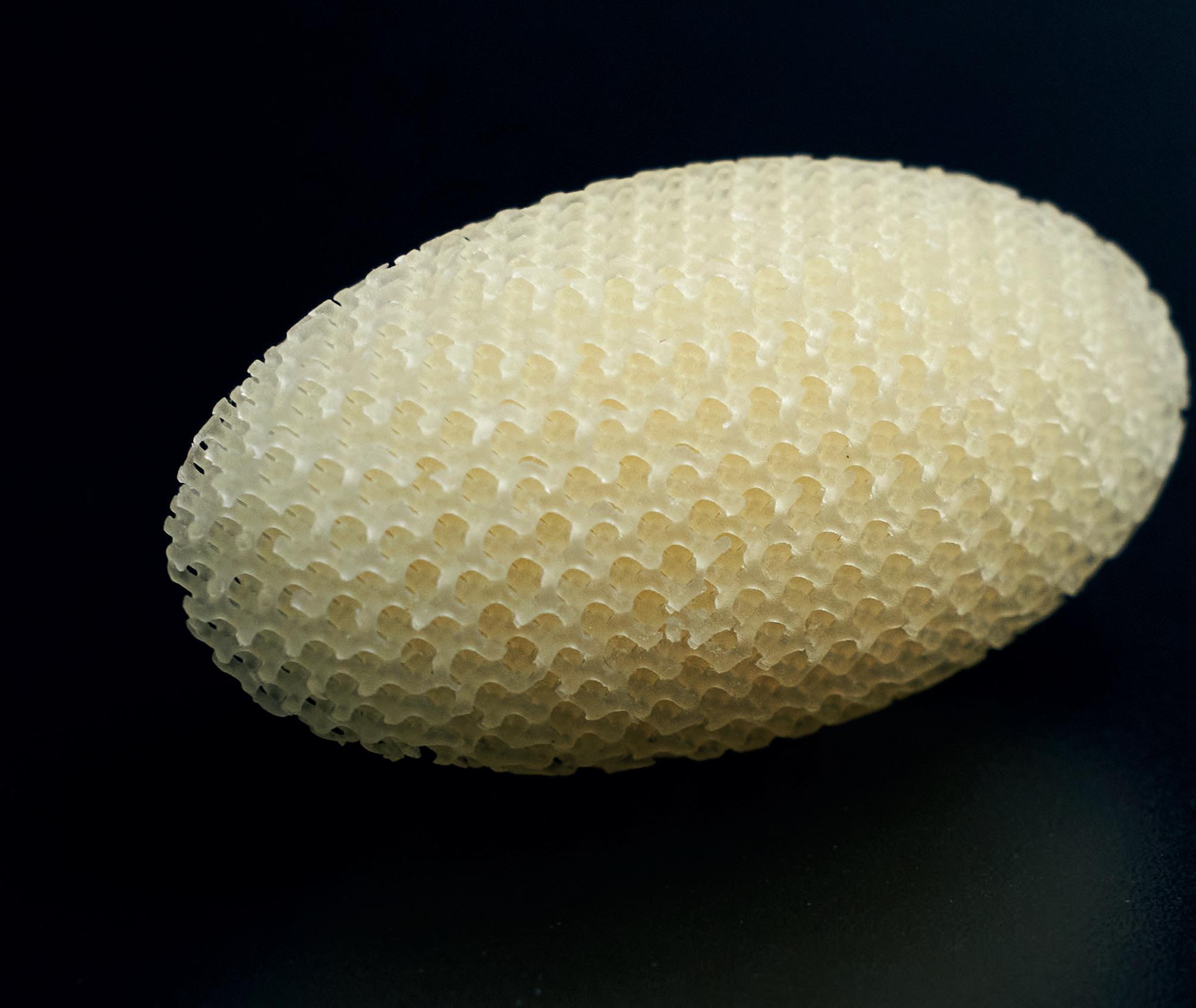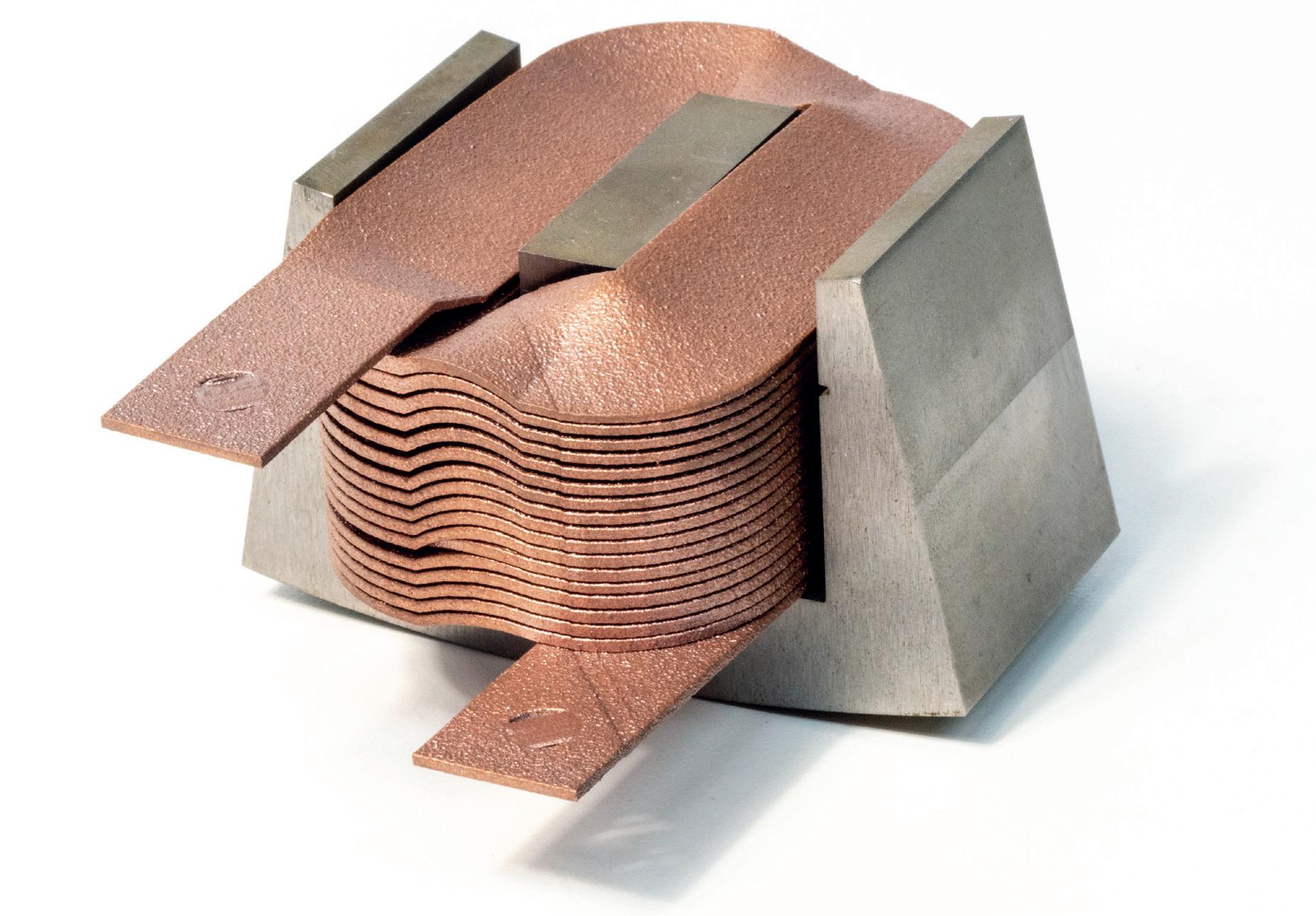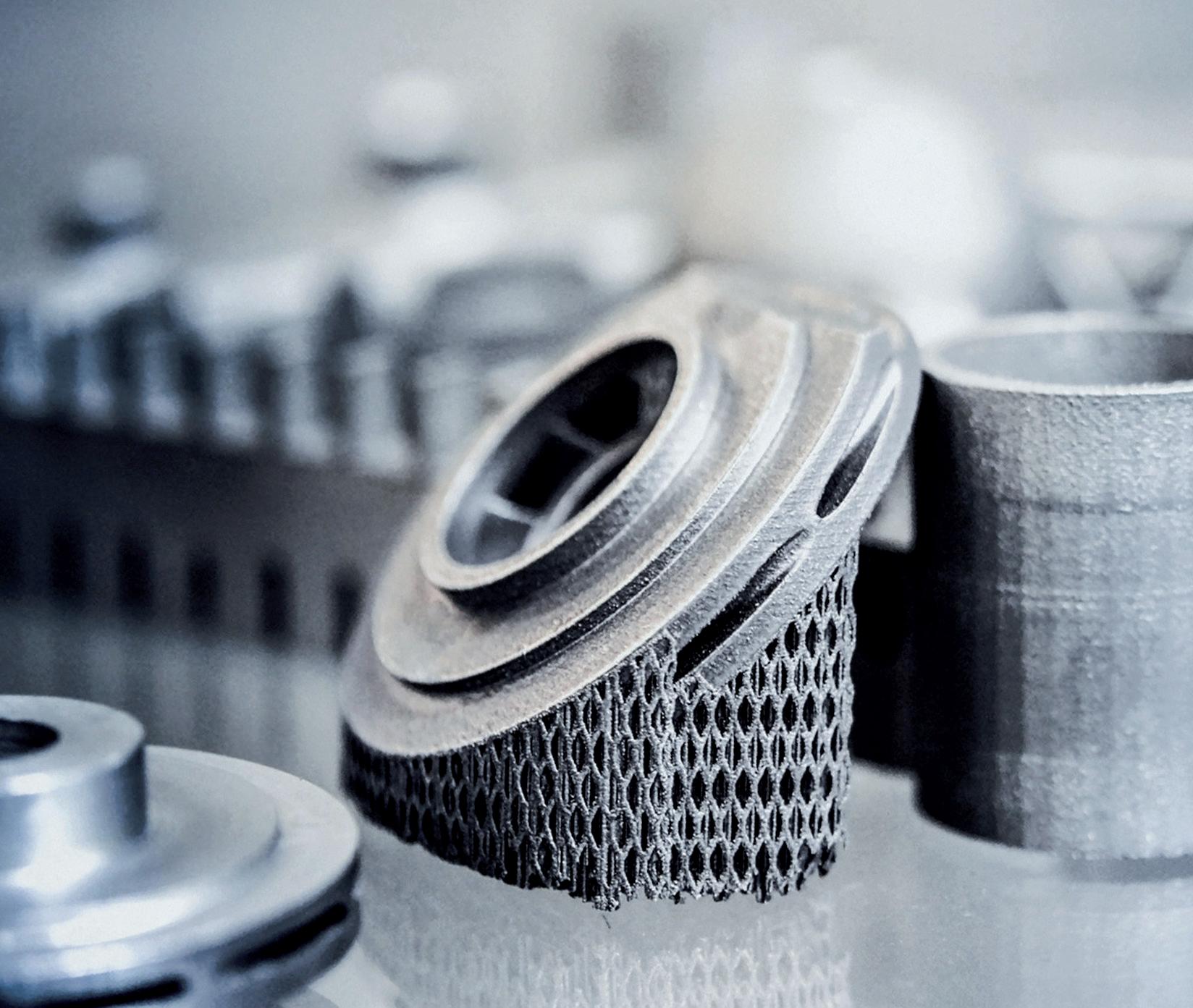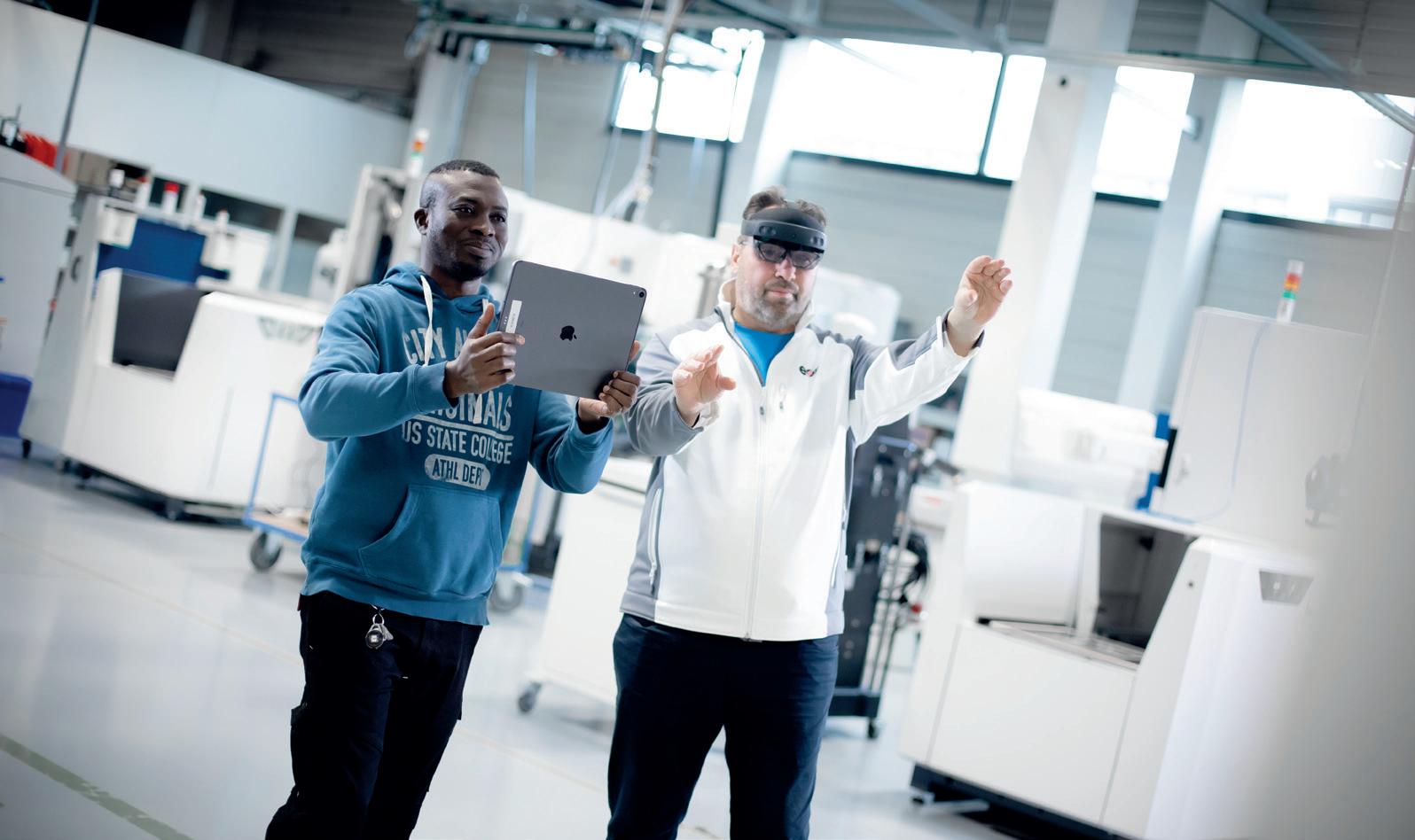
7 minute read
GOING FOR GOLD
WORDS: SAM DAVIES
GOING FOR GOLD
Acouple of decades ago, I decided I wanted to commercialize products in the materials space, and the reason is, I think we’re in what you might call a materials revolution.”
It’s a big statement right out of the blocks as Adam Hopkins, PhD, the Uniformity Labs (UL) CEO, is asked to explain the origin of the company he founded back in 2014. And as the conversation continues over the next 50 minutes, Hopkins barely slows down.
Slowing down, it seems, isn't on the company's agenda either. UL came out of stealth with a $38m Series B financing round in February before quickly introducing new products and revealing real-world applications of its metal 3D printing materials.
Having identified that the materials industry was amidst what he describes as a revolution, Hopkins established UL not long after earning his PhD in Theoretical Chemistry from Princeton University, where he was also commended with the Ray Grimm Memorial Prize in Computational Physics. Working in the university’s Torquato Lab alongside Professor of Chemistry Salvatore Torquato, Hopkins developed a robust packing algorithm that optimizes ratios of differentsized spheres to produce novel 3D printing materials exhibiting ‘99%+ density’.
Today, it serves as the foundation of Uniformity Labs’ ambitions in the additive manufacturing (AM) space. But initially, Hopkins and his team had looked at taking their computational technology to the concrete industry, where it wanted to reduce the amount of cement needed to build structures and offer a stronger alternative material. Though the technology would have worked, Hopkins says the concrete market was going to be hard to move because ‘the cost margins are razor-thin.’ In AM, though, it identified a sector where higher-performing materials were going to be essential as 3D printing technology matured.
“We spent years optimizing this for different sizes and shapes of powder that were available in additive, and we optimize for costs as well as for properties,” Hopkins said. “And it’s not just about density. When you’re a laser machine, the densest powder gives you some advantages, but a uniformly spread powder bed is where uniformity comes from [and] is probably more important.
“Folk have known this with respect to spherical particles, but spherical particles of one size. [They] don’t have anything on spherical particles – or non-spherical particles as in our case – of many different sizes, where the little particles are filling in all the gaps between the big ones, so you have a very high-density bed, you have more powder on the bed, you also have smaller particles filling the gap. You have a very smooth bed, a very uniform bed, and you’re decreasing stochastic variation simultaneously with this dense powder that exponentially increases laser absorption that is thermally conductive, instead of thermally insulating. You melt a lot more powder per unit energy, as well as having a more uniform bed. So, more reliability, more repeatability through the uniformity, much faster printing.”
Uniformity Labs has been able to achieve this without spending ‘hundreds of millions of dollars,’ with Hopkins saying existing powder metallurgy equipment and platforms will be up to the task and users ‘won’t have to sacrifice anything’ to use the company’s powders. These powders, per UL, boast reduced porosity of 1530% and up to ‘1000x+ more contact points between particles.’ This helps Uniformity Labs’ materials to be more thermally conductive and allows the user to sinter more uniformly, yielding denser parts. It also means there is less shrinkage of parts during the sintering phase.


“And that’s perhaps even more important,” Hopkins added. “Geometric tolerance or geometric accuracy is exponentially dependant on shrinkage and what that means is if you reduce your shrinkage by a factor of two, you get roughly a factor of five-to-ten absolute tolerance improvement. It enables much more accurate sintering of larger parts which is a big deal because in the sintering space – binder jetting and MIM – one of the main problems is once you get to larger parts, you have uncontrolled shrinkage; you’re not exactly sure how much the part is going to shrink or it’s going to warp when it shrinks. It makes it impossible to make certain parts and certain geometries and it also makes it inaccurate, so you need to build on more material and then you need to do more post-machining to get rid of that extra material.”
Hopkins sees ‘tremendous’ opportunity with binder jetting and has been working with Desktop Metal for several years on a range of projects, including one that resulted in the launch of an aluminum 6061 material for the Production System in March. Set to be made available once fully qualified, the aluminum 6061 exhibited greater than 10% elongation, as well as improved yield and ultimate tensile strength compared to wrought 6061 aluminum with similar heat treatment. The work between the two firms is ongoing, with Uniformity utilizing in-house Desktop Metal Shop and Production P-1 Systems for materials development.
They are not the only 3D printing systems Uniformity Labs has taken ownership of, nor does it just focus on binder jet technologies. Using an SLM 280 2.0 Dual Laser system recently, Uniformity Labs additively manufactured a roll-cage for a solar-powered race car that competed in the Bridgestone World Solar Challenge, an international event where solar-powered cars drive 3,000km through the Australian outback. For this project, Uniformity Labs used its ultra-low porosity AlSi10Mg aluminum alloy to print the topologically optimized component with a 30μm layer thickness, though it is said to have a productivity level equal to that of a 60μm layer thickness print. The company also offers titanium, cobalt chrome and superalloy materials.
Whether developed for binder jetting processes or laser powder bed fusion, Uniformity’s materials are designed to ensure they are high in density, low in porosity and output quality 3D printed components. The company has different recipes for its powder bed fusion aluminum materials and powder fusion steels, just as it does its powder bed fusion steels compared to binder jetting steels, with the parameters optimized with the turn of a dial.
Owed to its computational technology, Hopkins believes Uniformity can ‘turn knobs that others can’t’ and backed by $38m in funding from IP Group and Orion Resource Partners, the company is pushing to establish itself as an AM materials leader. A key part of that objective has been to recruit Gary Brown as VP of Finance; appointing former Jabil execs Geoffrey Doyle and Walter Tersigni to the roles of VP of Business Development and VP of Sales; and adding GM veteran Alan S. Batey, former Nucor Chairman John J. Ferriola and former GKN Sinter Metals President Christon Franks to its Board of Directors. It is also building out a third facility where the company will have 50,000-square-foot of space dedicated to the production of 4,000 tonnes per annum of high-quality steels, cobalt chrome and other ferrous materials, while titanium and aluminum are the focus of the company’s alreadyestablished pilot production plant.
With the finances, experience and intellectual property all set in place, Uniformity Labs is now joining the number of other ‘fantastic materials companies out there’ and has outlined a roadmap that will take the company from producing the tonnes of powder per month it does today, to tens of tonnes, hundreds of tonnes and – ‘maybe one day, long, long in the future’ – tens of thousands of tonnes. For that, Hopkins says the industry needs to grow and the 3D printing machines need to improve, but he’s confident they will and he’s confident Uniformity will then be among the best powder suppliers around.
“There’s no world where Uniformity is the only powder supplier. We’re not out there to supplant anybody. We’re out there to grease the gears, or maybe I can say a step further, we’re out there to remake the inner workings of the mechanism that is the AM industry,” Hopkins finished. “But we’re not making all the gears, we’re going to be one or two of the components and we’re going to put them all together in the way that best helps our customers. There’s always going to be a place for standard monomodal powders in AM. We’re not going to dominate the powder industry, but we are going to be the gold standard of powder.”
SHOWN:
PART PRINTED WITH UNIFORMITY LABS MATERIAL
SHOWN:
METAL POWDER ATOMIZER AT UNIFORMITY LABS








